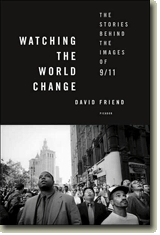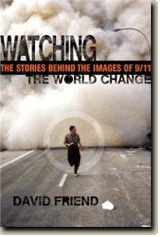« Previous · Home · Next »
November 30, 2008
INSTANT IMAGES & INDIA'S 9/11
The terrorist atrocities in Mumbai this week have been called India’s 9/11. And the characterization seems apt, given the orchestrated carnage, intended body count, and the cold-blooded nature of the attacks.
In terms of media coverage, however, the horrific events seem less like the events of September 11, 2001, and more in line with the South Asian tsunami (2004), the London transit bombings (2005), and the Hurricane Katrina disaster (2005), which turned average citizens into frontline correspondents thanks to the ubiquity of cell-phone cameras, lightweight digital video cameras, and photo-oriented blogs.
Given how rapidly technology has propelled our instant access to images and on-the-fly “eyewitness” accounts by citizens caught up in modern-day disaster, we tend to forget that on 9/11 there was no easy way to stream videoclips, few photo blogs, no camera-equipped cell phones. (As I note in Watching the World Change [page 217], former Paris Match editor Alain Genestar would insist, in 2006: “If 9/11 had happened today, the people inside [the towers] would have taken photographs on their cell phones, from inside, and sent the pictures out [over the Internet].”) It is difficult to fathom or imagine the compounded horror we would have seen, first hand.
In today’s New York Times, reporters Brian Stelter and Noam Cohen make this same point in their article “High-Tech Citizen Journalists Provided Glimpse of Mumbai Attacks.” They write:
"From his terrace on Colaba Causeway in south Mumbai, Arun Shanbhag saw the Taj Mahal Palace & Tower Hotel burn. He saw ambulances leave the Nariman House. And he recorded every move on the Internet.
"Mr. Shanbhag, who lives in Boston but happened to be in Mumbai when the attacks began on Wednesday, described the gunfire on his Twitter feed — the 'thud, thud, thud' of shotguns and the short bursts of automatic weapons — and uploaded photos to his personal blog.
"…The attacks in India served as another case study in how technology is transforming people into potential reporters, adding a new dimension to the news media.…At the end of the day on Friday, CNN’s license to transmit live video in India expired, forcing the network’s correspondents to report via telephone. CNN and other channels in the United States relied on live coverage and taped reports from Indian networks.
"The cameras and phones carried by people swept up in the attacks were not subject to any such rules. Mr. Shanbhag photographed one of the fires at the Taj hotel and the wreckage outside a popular cafe that was attacked on Wednesday and posted them on his Flickr stream. Some people transmitted video from inside the Taj hotel to news networks via cellphones. And reporters used cellphones to send text messages to hotel guests who had set up barricades in their rooms.
"Much of this activity flourished early in the crisis, while there was a vacuum of official information either from government sources or from mainstream media outlets still struggling to understand the extent of the attacks."
Or as Robert Calo of Berkeley's graduate school of journalism school had noted, in a story by the Times’s top media analyst David Carr the week of the 2004 tsuanmi: “If you think back, news gatherers would [traditionally] get the story and then commission a phototgrapher to go and get the pictures. Now we have flipped it around to where reporters are chasing the pictures, trying to create some context for what viewers are seeing.” (Watching the World Change, page 293).


